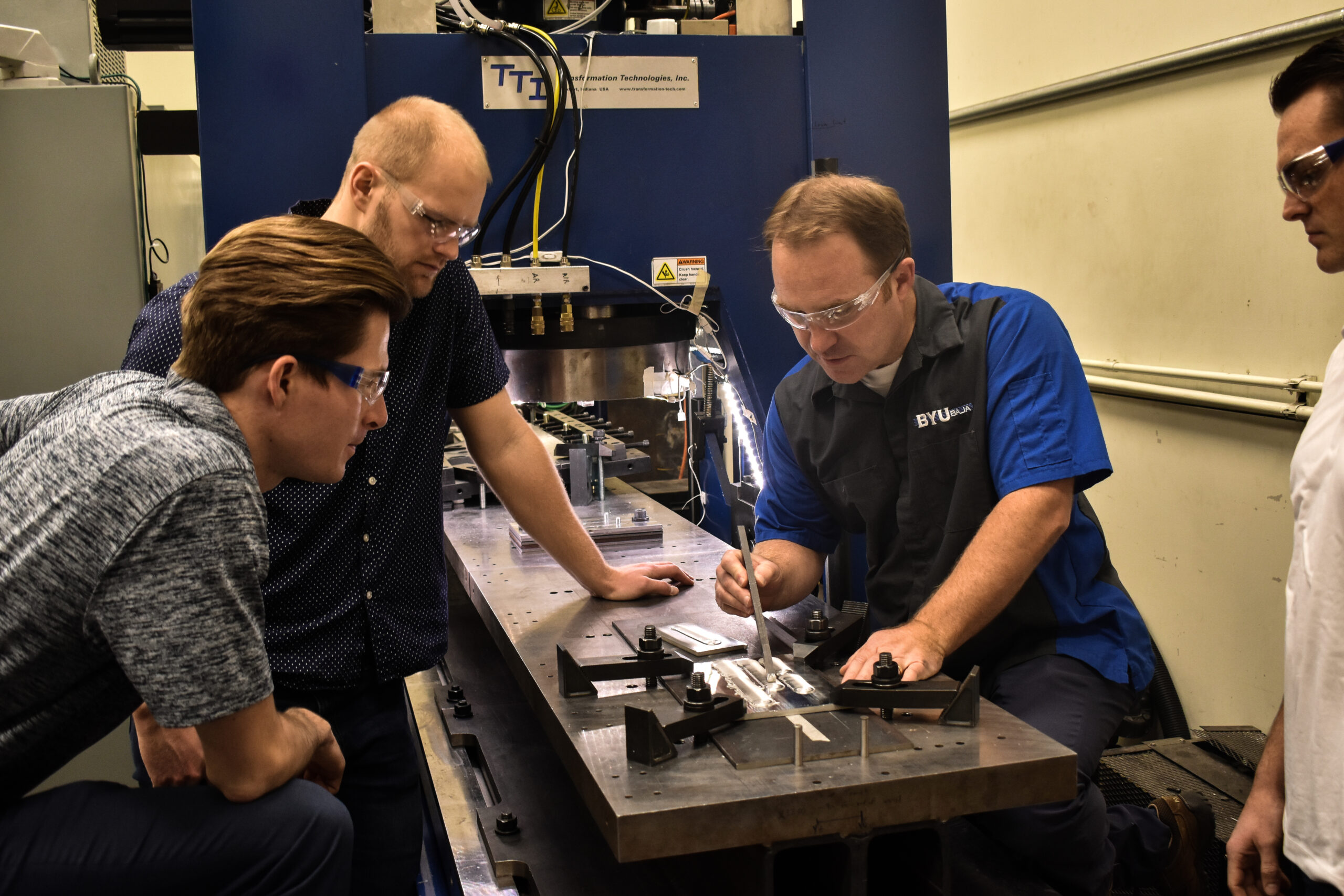
BYU manufacturing engineering professor Yuri Hovanski and his BYU research lab are well-known for their groundbreaking research in friction stir technology.
Hovanski said his research lab works with major automotive and aerospace companies like Boeing, NASA, General Motors, Toyota, and oil and gas production companies.
His research students describe Hovanski as driven, energetic, well-rounded, intelligent and enthusiastic. Hovanski’s passion for his research impacts the students in his research lab.
“I really enjoy working with him because he is so passionate about the projects and the research, so it’s hard not to get passionate as well,” Hovanski’s student John Hunt said.

Hovanski was once a student himself at BYU, completing his undergraduate degree in mechanical engineering in 2001. He then completed his master’s and doctorate degrees in mechanical engineering at Washington State University.
Participating in friction stir research himself as an undergrad, “BYU made an investment in me and that’s why I love being back here,” Hovanski said. “BYU gave me a huge opportunity with that experiential learning.”
Friction stir welding is a solid-state joining process, as explained by Hovanski. It involves joining materials together without ever melting them. His lab uses friction stir technology to create new unique properties in material so that it is stronger.
“What I want to be able to do in these high-strength materials is maintain what makes it a unique high-strength material,” Hovanski said. “Solid-state welding creates an opportunity to maintain the chemistry and the properties that are unique.”

Hovanski works with two research labs, one of which focuses on developing these friction stir technologies.
“I like working with Dr. Hovanski because he understands how to communicate well with the students,” said Andrew Curtis, a second-year graduate student. “He adjusts his teaching style to help each student progress in their own way and to achieve their potential.”
Hovanski believes that student research helps fulfill the vision and theme of BYU. He explained that students are more prepared to go out in the real world when they get real-world experience while in college.
“It is a great blessing to see the difference that you can make in students. I get to see students out in the industry and take what we are teaching them,” Hovanski said. “I love the fact that BYU allows undergrads to do what I normally see only graduates do at other universities.”
It was not always in Hovanski’s plans to come back and teach at BYU, he said. After a few years working in the engineering industry he decided to take the route to academia.
“I’m OK being a professor until I retire,” Hovanski said. “While doing that, I hope to tackle a whole lot of challenges and break down barriers in technology.”




